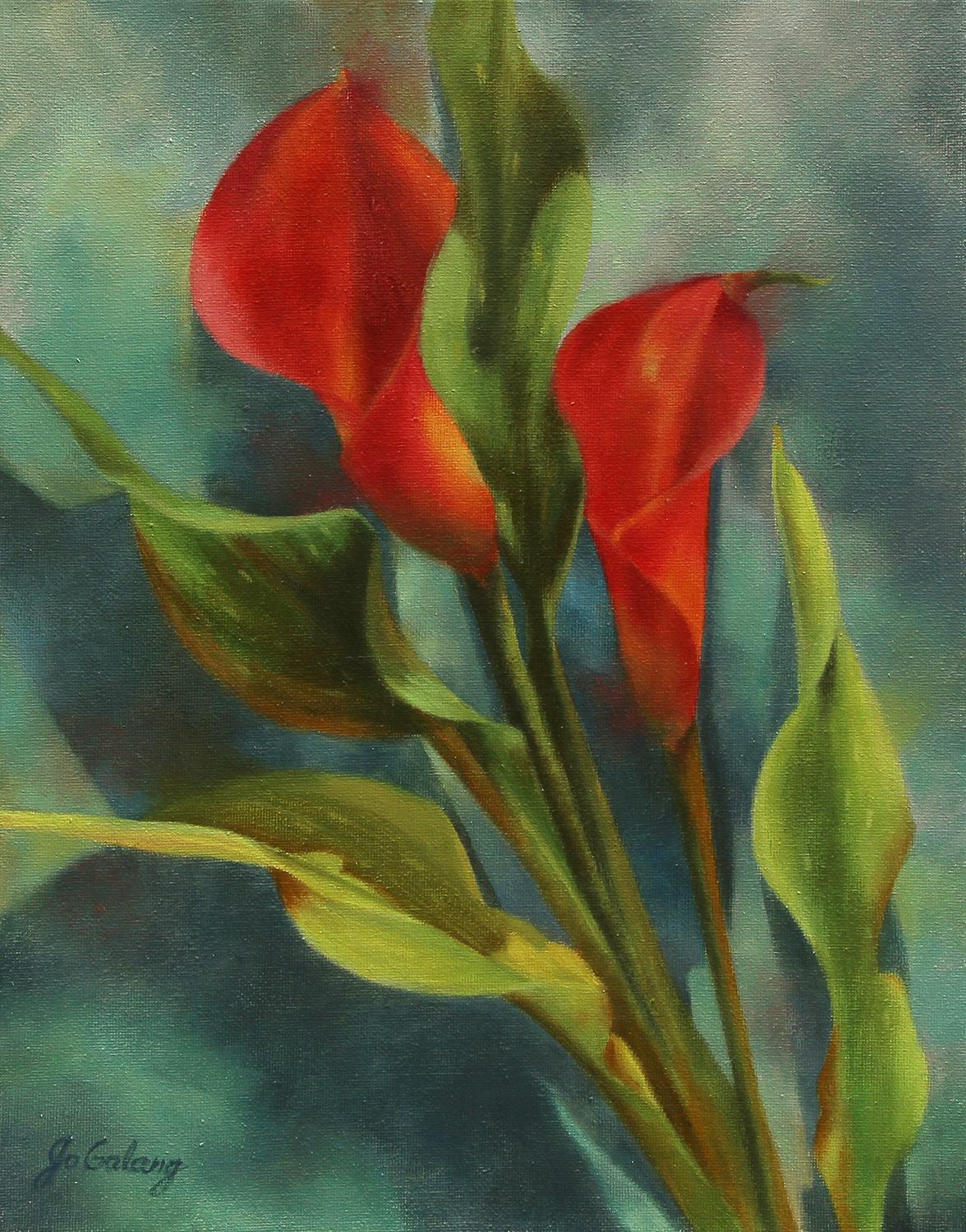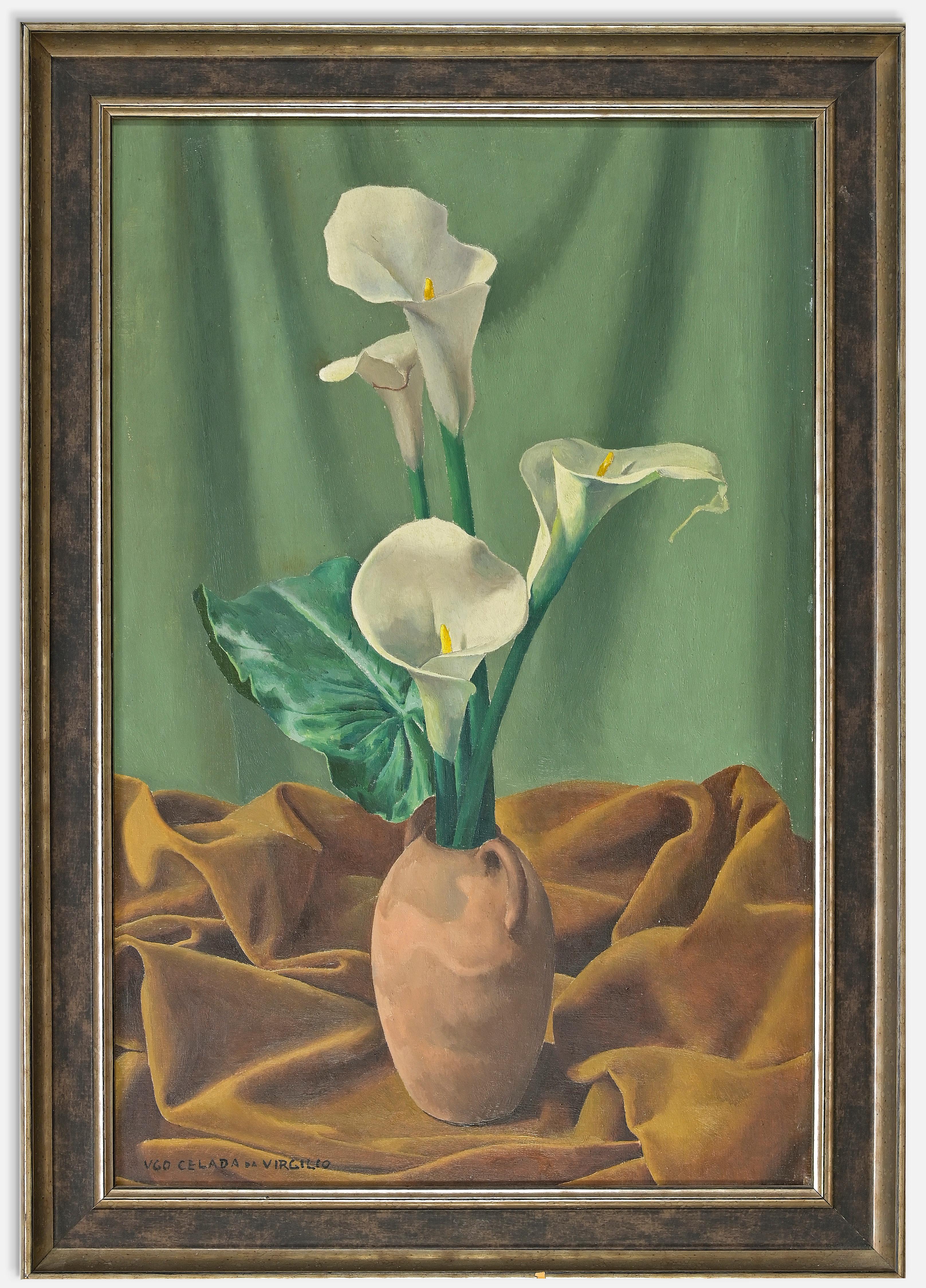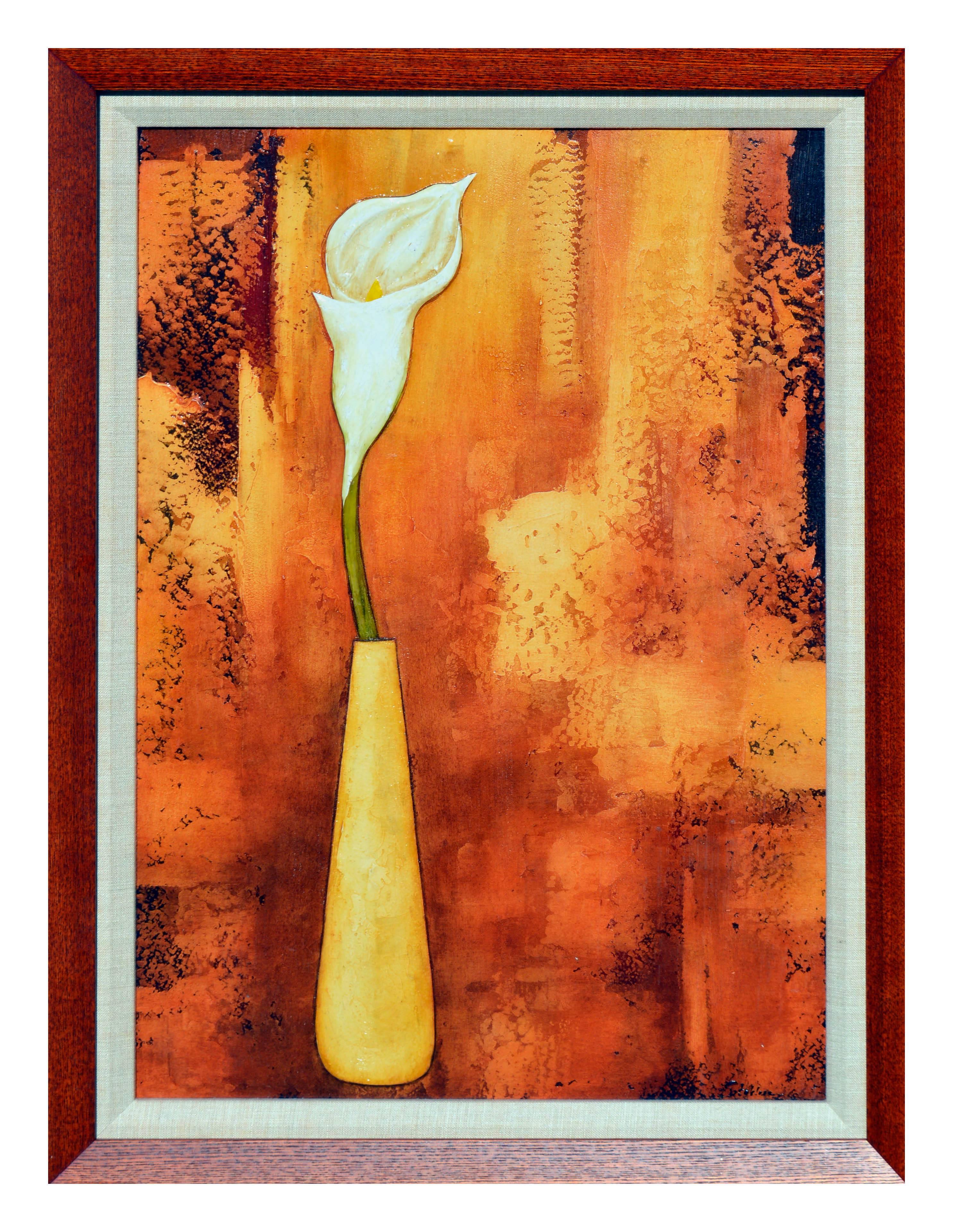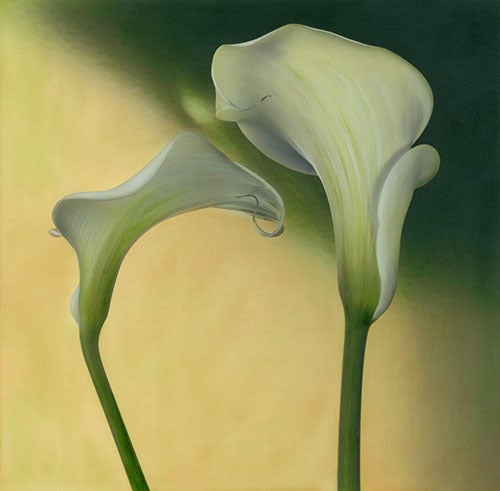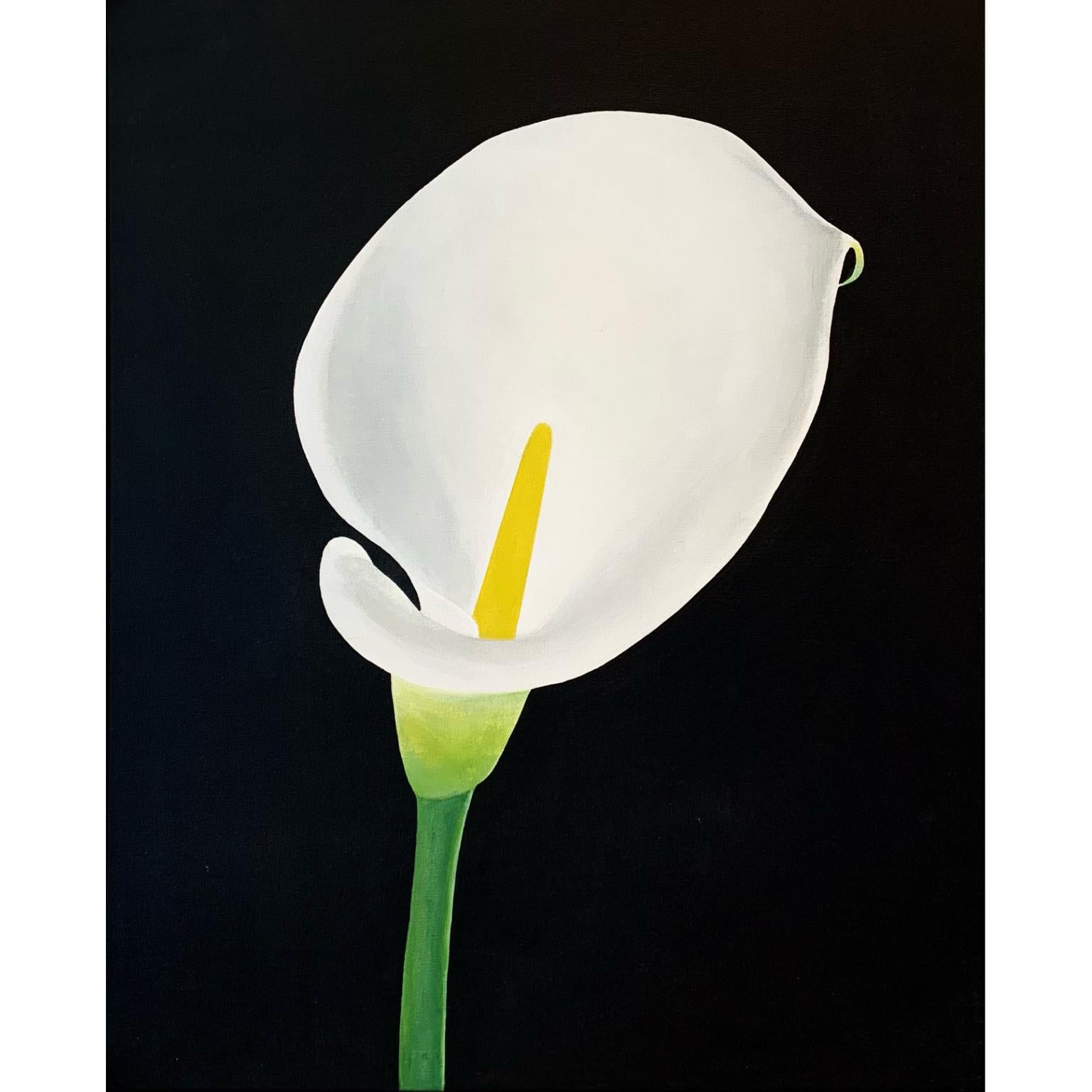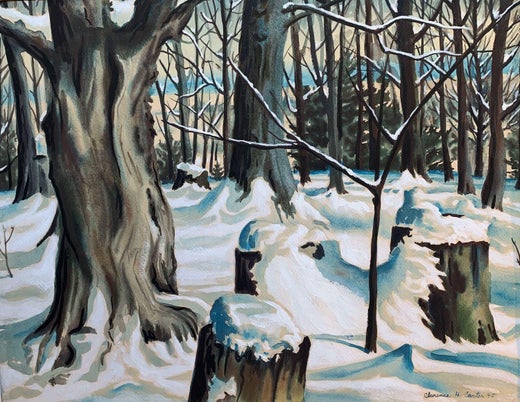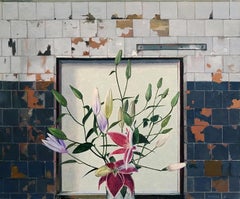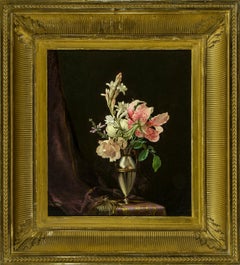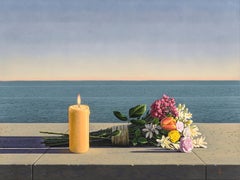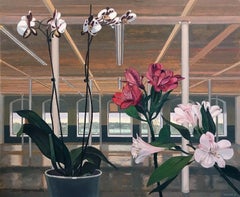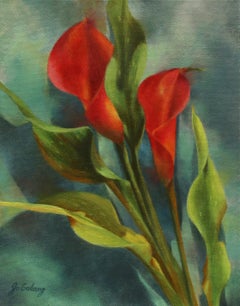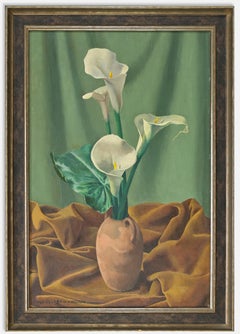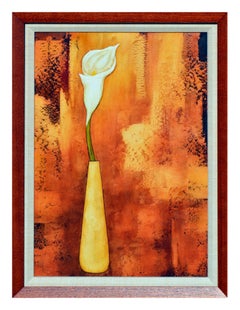Items Similar to Yellow Calla Lily
Want more images or videos?
Request additional images or videos from the seller
1 of 8
Clarence Holbrook CarterYellow Calla Lily1931
1931
$65,000
£49,649.82
€57,053.27
CA$92,787.98
A$101,734.70
CHF 53,125.06
MX$1,224,249.39
NOK 669,556.67
SEK 629,555.50
DKK 426,082.25
About the Item
In his long and productive career, Clarence Holbrook Carter followed an independent course. He incorporated an unlikely mixture of stylistic influences, drawing from such disparate sources as regionalism and surrealism without strictly cohering to any one school. An experimentalist in the truest sense, Carter produced an oeuvre that defies categorization. He attempted nearly every variety of subject, from genre to still life, landscape to portrait, abstract to magic realist. In this sense, his career reflects the changing currents of twentieth century modernity, in which artists struggled to find an appropriate means of self-expression.
Carter was born in Portsmouth, Ohio, in 1904. He showed an early talent for the arts, taking watercolor classes at the age of nine, followed by cartooning classes at thirteen. In 1923, he enrolled at the Cleveland Institute of Art, Ohio, from which he graduated four years later. Carter then set for Europe, where he spent a year traveling to Italy, Sicily, Tunisia, Switzerland, France, England, and Belgium, and spent a summer studying at the Hans Hoffman Summer School in Capri. In 1929, he returned to Cleveland, where the following year he began teaching at the Cleveland Museum of Art. In 1938, Carter was made Assistant Professor at the Carnegie Institute of Technology in Pittsburgh, Pennsylvania, where he taught until 1944.
From the 1920s through the 1940s, Carter painted prolifically and enjoyed considerable success, exhibiting frequently, including several shows at the Metropolitan Museum of Art, New York, from 1940-42. His style was widely interpreted as Regionalist, since his paintings often represented scenes of ordinary American life. Farmers, fruit stands, street scenes, and factories all appear in works of this period. Paintings such as Trapeze Artists, formerly at Hirschl & Adler (1933; see Hirschl & Adler Galleries, Inc., New York, 1989, Clarence H. Carter: Early Works, no. 2 illus. in color), display an interest in the playful innocence of the rural Ohio lifestyle. However, the real-life scenes and places depicted in his paintings from this period, by their straightforward representation, are often laid bare for the viewer to contemplate their inner mysteries.
Beginning in the early 1950s, Carter began painting in a surrealist mode, in which he pursued ideas about time, death, and spirituality in a series of works, called the Projectives. These canvases are constructions of images, reminiscent of collage, in which a variety of disjunctive elements appear together to form elusive, mysterious narratives. By the 1960s, Carter had begun his most well-known paintings, characterized by the incorporation of ovoid shapes, including the Transections, Eschatos, and Mandala series. To Carter, the ovoid symbolizes a transection, or a bridge between life and death. “The shape of the egg affirms life, but biological life in time passes away, becoming spirit. The ovoid becomes simply a void. In death shape remains only in silence — eternal, all encompassing silence” (Clarence Carter, as quoted in Linda Weintraub, “The Egg Symbol in the Work of Clarence Carter,” in Center of the Arts, Muhlenberg College, Allentown Pennsylvania, 1978, Clarence H. Carter, n.p.). Carter remained occupied with these ideas until the end of his life.
Because of the wide range of Carter’s career, critics have had a difficult time placing his work in an art-historical context. Carter perhaps summed it best himself:
My credo is simple and changeable. I may not change radically but if I wish to I have no preconceived theories to hold me back. I feel that theories tend to make an artist academic no matter how advanced and radical these theories appear to be at the present time. My paintings at various times have been termed cubist, surrealist, neo-romanticist, realist, and even oriental, but at no time did I ever follow any school. I have painted my world as I have seen it and felt it (Carter, as quoted in Monroe A. Denton, Jr., “Some notes on Clarence Carter,” in Center for the Arts, Muhlenberg College, op. cit., n.p.).
- Creator:Clarence Holbrook Carter (1904-2000, American)
- Creation Year:1931
- Dimensions:Height: 24.4 in (61.98 cm)Width: 18 in (45.72 cm)Depth: 1.5 in (3.81 cm)
- Medium:
- Movement & Style:
- Period:
- Condition:
- Gallery Location:New York, NY
- Reference Number:Seller: APG 80481stDibs: LU236197202
Clarence Holbrook Carter
Clarence Holbrook Carter achieved a level of national artistic success that was nearly unprecedented among Cleveland School artists of his day, with representation by major New York dealers, scores of awards and solo exhibits, and streams of praise flowing from pens of the top art critics. Over the course of his 60+ year career Carter evolved from an exceptionally fine American Scene painter capable of evoking deep reservoirs of mood, into an abstractionist with a strongly surrealist bent. While his two bodies of work seem at first to be worlds apart, owing to their different formal vocabularies, they, in fact, explore virtually the same subject: the nexus between life and death and the transition from earth to spirit. The early work finds its expressive power through specific people, events, and landscapes—most of which are drawn from his experiences growing up in the river town of Portsmouth, Ohio—while the later work from the 1960s on evokes potent states of being through pure flat shape, color and form that read as universals. As his primary form he adopted the ovoid or egg shape, endowing it with varying degrees of transparency. Alone or in multiples, the egg moves through Carter’s landscapes and architectural settings like a sentient spirit on a restless quest. Born and raised in southern Ohio along the banks of the mercurial Ohio River and its treacherous floods, Carter developed a love of drawing as a child, and was encouraged by both his parents. He was self-directed, found inspiration all around him, and was strongly encouraged by the fact that his teenage work consistently captured art prizes in county and state fairs. Carter studied at the Cleveland School of Art from 1923-27, where he trained under painters Henry Keller, Frank Wilcox and Paul Travis. Returning to Cleveland in 1929, Carter had his first solo show, and through Milliken taught studio classes at the Cleveland Museum of Art from 1930-37. In 1938, he moved to Pittsburgh to teach at the Carnegie Institute of Technology until 1944. Carter’s American Scene paintings of the ’30s and ’40s, which launched his artistic star, are the works for which the artist remains best known. During and immediately after World War II, Clarence Carter realized his attraction to bold pattern, dramatic perspective and eye-catching hard-edged design was a poor fit with the prevailing style of Abstract Expressionism. Fortunately, these same hallmarks of his style were prized within the realm of commercial art. Around 1964 Carter acknowledged a need to break from the confines of representational painting. Once Carter had found a potent symbol in the egg, he used it to create an astounding body of imagery for the rest of his life. Among the most ambitious of all his later paintings were his Transections, a theological term meaning to cross, specifically between life and death.
About the Seller
5.0
Recognized Seller
These prestigious sellers are industry leaders and represent the highest echelon for item quality and design.
Established in 1952
1stDibs seller since 2010
35 sales on 1stDibs
Typical response time: 16 hours
Associations
Art Dealers Association of America
- ShippingRetrieving quote...Shipping from: New York, NY
- Return Policy
Authenticity Guarantee
In the unlikely event there’s an issue with an item’s authenticity, contact us within 1 year for a full refund. DetailsMoney-Back Guarantee
If your item is not as described, is damaged in transit, or does not arrive, contact us within 7 days for a full refund. Details24-Hour Cancellation
You have a 24-hour grace period in which to reconsider your purchase, with no questions asked.Vetted Professional Sellers
Our world-class sellers must adhere to strict standards for service and quality, maintaining the integrity of our listings.Price-Match Guarantee
If you find that a seller listed the same item for a lower price elsewhere, we’ll match it.Trusted Global Delivery
Our best-in-class carrier network provides specialized shipping options worldwide, including custom delivery.More From This Seller
View AllLilies
By John Moore
Located in New York, NY
Signed and dated (at lower right): MOORE 21
Category
2010s Contemporary Still-life Paintings
Materials
Oil
$24,000
Still Life with Flowers in a Vase
By Martin Johnson Heade
Located in New York, NY
Oil on canvas
Category
19th Century Still-life Paintings
Materials
Oil
Candle and Flowers
By David Ligare
Located in New York, NY
SAPERE AUDE. Dare to be wise. Immanuel Kant’s directive is embodied in the work of David Ligare. For thirty-five years, Ligare has dedicated his work to ...
Category
2010s Contemporary Still-life Paintings
Materials
Canvas, Oil
Orchids and Lilies
By John Moore
Located in New York, NY
Signed and dated (at lower right): MOORE 21
Category
2010s Contemporary Still-life Paintings
Materials
Oil
Golden Rod and other Wildflowers
By John Ross Key
Located in New York, NY
Signed (at lower right): John Ross Key 1882
Category
Late 19th Century American Realist Still-life Paintings
Materials
Canvas, Oil
Still Life with Polykleitian Head and Ancathus
By David Ligare
Located in New York, NY
SAPERE AUDE. Dare to be wise. Immanuel Kant’s directive is embodied in the work of David Ligare. For thirty-five years, Ligare has dedicated his work to ...
Category
Early 2000s Contemporary Still-life Paintings
Materials
Canvas, Oil
You May Also Like
Calla Lily, Oil Painting
By Jo Galang
Located in San Francisco, CA
Artist Comments
"The most popular calla lily meaning these days is that of purity, faithfulness, and holiness," says artist Jo Galang. "The flower is often depicted in image...
Category
21st Century and Contemporary Contemporary Still-life Paintings
Materials
Oil
Yellow Calla
By Sheila Metzner
Located in New York, NY
Fresson print. This photograph is an Edition of 15. All editions are signed by the photographer.
Category
Early 2000s Color Photography
Materials
Color
Price Upon Request
Still Life with Calla Lily - Oil on canvas by Ugo Celada da Virgilio - 1940s
Located in Roma, IT
Still life with Calla Lily is an oil painting on masonite realized by Ugo Celada da Virgilio.
Hand-signed on the lower left.
Provenance: Galerie Sigfrid O...
Category
1940s Contemporary Figurative Paintings
Materials
Masonite, Oil
Mid Century Modern Calla Lily in Bloom Still-Life
By Agnes Stoklosa
Located in Soquel, CA
Mid Century Modern Calla Lily in Bloom Still-Life in Oil on Board
Gorgeous Mid Century Modern still life of Calla Lily with orange background by Agnes Stoklosa (American, 20th Centu...
Category
1960s American Modern Still-life Paintings
Materials
Oil, Board
$1,760 Sale Price
20% Off
Calla Lily III
By Brigitte Carnochan
Located in Santa Monica, CA
Signed, dated, numbered and titled in pencil on recto; artist's copyright label affixed to verso
Painted Gelatin Silver
16 x 20 inches
Edition 8 of 25
Category
1990s Photography
Materials
Silver Gelatin
Calla Lily
By Charles Pachter
Located in Toronto, Ontario
Charles Pachter (b. 1942) is one of the most collected and cherished Canadian artists. His iconic, uplifting, and patriotic images have earned their place in the nation's museums and the Canadian art canon.
The Barn, along with Queen Elizabeth and the Moose, forms a triad of icons that Charles Pachter has repeatedly visited over the course of his career.
Completed in 2021, this exemplary painting introduces Pachter's flowers. This recent series focuses on an entirely new subject for the artist that started early on in the pandemic. Realized in a time of uncertainty and despair, this body of work is remarkably optimistic.
As with the best of his work, Pachter's charming imagery presents a new narrative on Canadiana, this time detailing the diverse flora encountered in his close surroundings.
This refreshing painting conveys the gentle curvature of the trumpet-shaped flower, its smooth surface illuminated against the stark black background that recalls Pachter's distinct graphic style.
Pachter's work is represented in both public and private collections across Canada including the Art Gallery of Ontario, The Portrait Gallery of Canada, The Royal Ontario Museum, and the McMichael Gallery. In recognition of his outstanding achievements, Pachter holds the prestigious position of Officer of the Order of Canada and is also a recipient of the Queen’s Jubilee medal.
"Calla Lily...
Category
2010s Contemporary Still-life Paintings
Materials
Acrylic
Read More
With Works Like ‘Yours Truly,’ Arthur Dove Pioneered Abstract Art in America
New York gallery Hirschl & Adler is exhibiting the bold composition by Dove — who’s hailed as the first American abstract painter — at this year’s Winter Show.
Remarkably, Elizabeth Turk’s Sculptures Highlight the Lost Voices of Extinct Birds
In one of the first live and in-person exhibitions at a Manhattan gallery since last spring, the California-based sculptor gives the lost voices of endangered and extinct birds and animals a magnificent embodied form.
